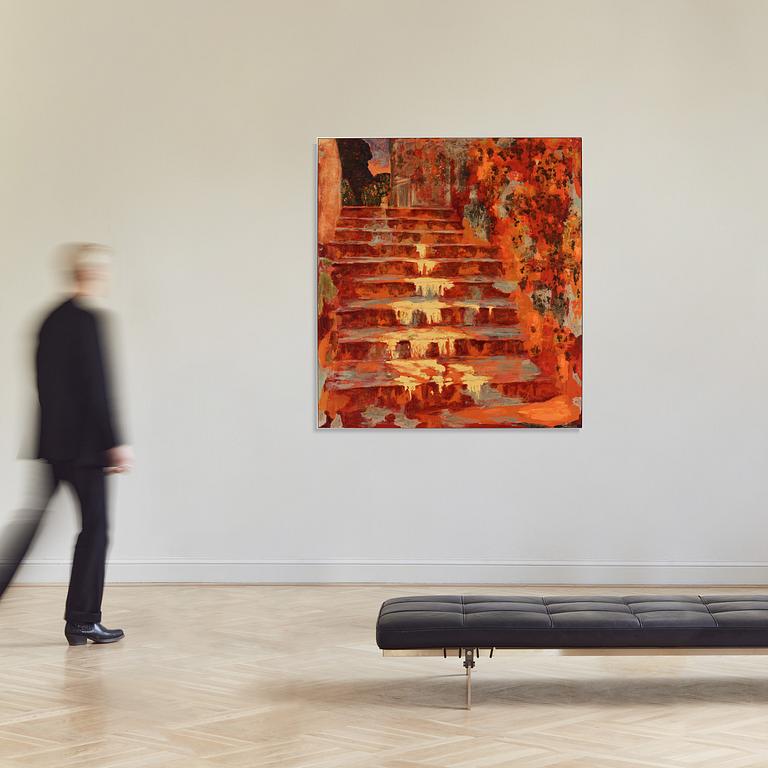Rolf Hanson
'Runtom trappa VIII'
Signed Rolf Hanson and dated 2002 verso. Panel 140 x 127.5 cm.
Provenance
SAK, first prize 2002.
Bukowski Auktioner, Contemporary & Design 561, 18 May 2011, lot 483.
Private Collection, Stockholm.
Exhibitions
Dunkers kulturhus, Helsingborg, 'Rolf Hanson: Runtom hus/Around the house, Runtom trappa/Around the stair, Descendant/Remontant, Ombre portée, Superficie picturata', 2006.
Literature
AnnCatrin Gummesson och Magnus Jensner (red), 'Rolf Hanson: Runtom hus/Around the house, Runtom trappa/Around the stair, Descendant/Remontant, Ombre portée, Superficie picturata', Dunkers kulturhus, 2006, reproduced in colour on full-page p. 51.
More information
Throughout history, staircases have frequently appeared as motifs in both painting and photography. The staircase that Rolf Hanson uses as the starting point for his award-winning study 'Runtom trappa' is located in Montigny-sur-Loing, France. It is a stone staircase that also appears in one of Carl Fredrik Hill's most famous paintings from 1876. Hanson's paintings are executed with varying degrees of perspective and spatial depth, but it is primarily his skillful color treatment and rich palette that make them so appealing. The warmth of the colors radiating from the image and can thaw any frozen heart.
Hanson's endeavor to dissolve the space and deconstruct his subject means that something as mundane as a staircase can be depicted time and again without the image becoming less interesting, not least because of his fantastic ability to create balanced compositions. These repetitions enhances the subject as Hanson delves into the theme and tests different approaches to the motif. The staircase as a motif is often used to enhance distance or mark depth in the image. Here it is seen from below, allowing Hanson to take full advantage of the play of light over the steps, the illuminated horizontal surfaces, and the shaded front edges. This perspective expands the depth of the image and the direction helps the viewer to enter the scene. The paintings in the series 'Runtom trappa' are images that one does not merely view but experiences, as their size seems to envelop the observer. The interplay between the image surface and the pictorial space creates tension in the image and truly demonstrates Hanson's great professional skill, as he handles both brush and palette knife with finesse.
Magnus Jensner at Dunkers kulturhus describes the series "Runtom trappa" in the book published in conjunction with Hanson's exhibition in Helsingborg. He writes the following about the painting in the auction: 'The painting that stands out from the others is number VIII. Here we have come much closer to the staircase, which almost fills the entire image, but once at the crest, the picture opens up to a landscape beyond. An evening sky is visible above the vegetation and the hinted building beyond the stair's crest. In the staircase, the color-play behaves differently depending on how one chooses to perceive it. With the staircase's perspective, one sees it as if the color is flowing, moving down the stairs. If one tries to turn the staircase up towards the picture plane, or simply chooses to view the height of the steps as a surface, it becomes a color plane in dialogue with the surrounding areas of gray.'















































